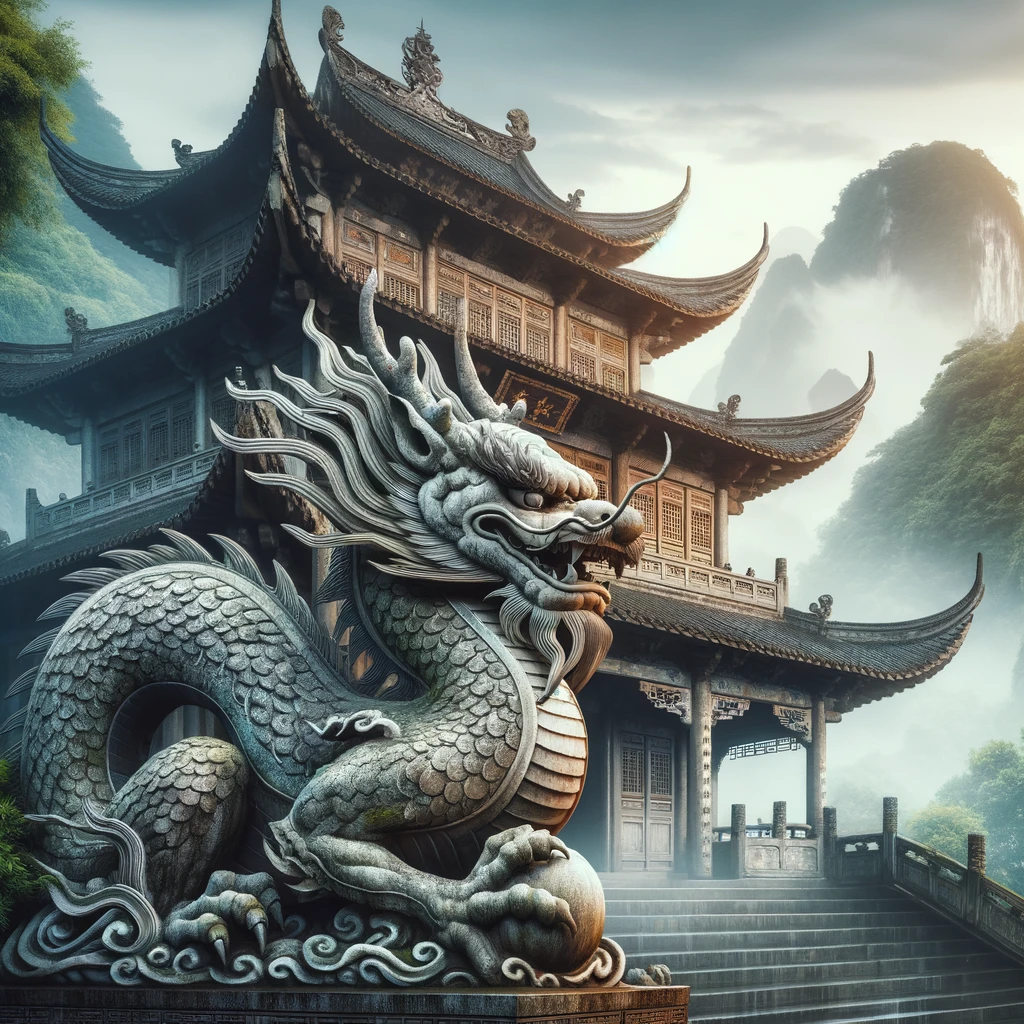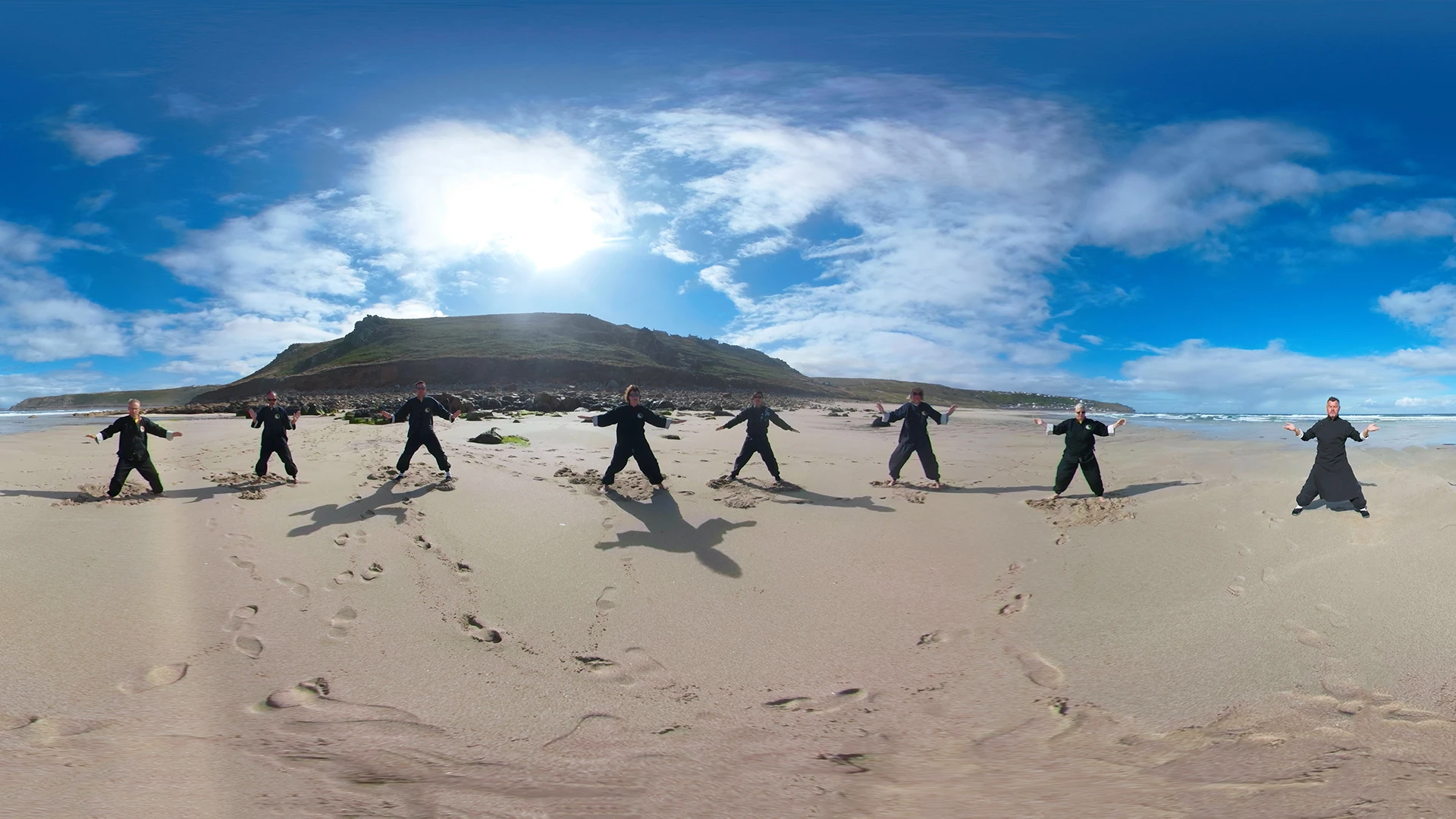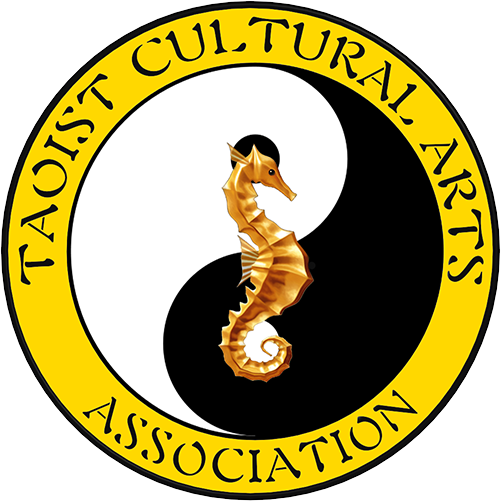
Join us to welcome in the Chinese New Year of the Dragon for a weekend of Tai Chi and Traditional Tai Chi weapons including Stick, Sword, Silk and Fan.
Tai Chi – Saturday February 10th 2024
Tai Chi Weapons – Sunday February 11th 2024, 10 a.m to 4 p.m
Introduction to the Dragon in Chinese Culture
The dragon, revered in Chinese culture, symbolizes power, wisdom, and prosperity. Unlike Western interpretations where dragons are often seen as malevolent creatures, the Chinese dragon is benevolent, embodying strength and good fortune. This creature is intricately woven into China’s mythology, art, and astrology, representing imperial authority and celestial power. The dragon’s image is omnipresent in festivals, architecture, and literature, reflecting its deep-rooted significance in Chinese heritage.
Historically, emperors were closely associated with dragons, considered to embody the dragon’s spirit, commanding respect and authority. Dragons are also seen as protectors, controlling water elements, bringing rain to crops, and ensuring harmony in the natural world. This positive portrayal underscores the dragon’s revered status, transcending mere myth to symbolize the potent forces of nature and the universe’s boundless energy.
This reverence for the dragon extends into various aspects of Chinese philosophy, particularly Taoism, which emphasizes living in harmony with the Tao, or the natural order of the universe. The dragon’s symbolism is deeply embedded in Taoist thought, representing wisdom, flexibility, and the dynamic balance between yin and yang. These attributes align with Taoist principles, influencing practices like Tai Chi, which seeks to harmonize body, mind, and spirit.
In exploring the significance of the dragon within Chinese culture, we delve into its impact on Taoism and Tai Chi, particularly focusing on the dragon stance. This stance, symbolic of yang energy, illustrates the profound connection between cultural symbolism and physical expression, offering insights into the dragon’s enduring influence on Chinese spiritual and martial practices.
The Dragon in Taoism
Taoism, with its roots in ancient Chinese cosmology and philosophy, regards the dragon as a powerful symbol of the Tao’s mysteries. The dragon embodies the Taoist ideals of harmony, immortality, and transformation, representing the seamless flow of energy that animates the universe. In Taoism, the dragon’s ability to move through water, land, and sky without effort mirrors the Taoist pursuit of living in accordance with the natural world, embodying the principle of wu wei, or effortless action.
The dragon’s imagery in Taoist art and literature often depicts it amidst clouds or water, signifying its mastery over the elements and its role as a mediator between heaven and earth. This portrayal resonates with the Taoist belief in the interconnectedness of all things and the importance of maintaining a balance between the physical and spiritual realms.
In Taoist practice, the dragon is frequently invoked as a symbol of spiritual awakening and the cultivation of qi, or vital energy. The dragon’s path—ascending to the heavens and diving into the depths—parallels the Taoist adept’s journey toward enlightenment, seeking to transcend the mundane to reach a state of unity with the Tao.
This spiritual symbolism of the dragon deeply influences Tai Chi, a martial art grounded in Taoist philosophy. The dragon stance, a key element of Tai Chi, exemplifies the cultivation of yang energy, reflecting the dragon’s vigor and transformative power. Through this stance, practitioners aim to embody the dragon’s qualities, integrating strength, flexibility, and balance into their movements and, by extension, their lives.
The Dragon and Tai Chi
Tai Chi, a martial art and meditative practice, draws heavily from Taoist philosophy, embodying the principles of balance, flow, and harmony. The dragon, as a symbol of potent yang energy, plays a significant role in Tai Chi, especially in the form of the dragon stance. This stance is not only a physical posture but also a manifestation of the internal energy and spiritual strength that the dragon represents.
Practicing the dragon stance in Tai Chi involves precise movements and postures that emulate the dragon’s fluidity and grace. This stance emphasizes the cultivation of internal energy, directing it through the body’s meridians to promote health and vitality. It mirrors the dragon’s power and majesty, encouraging practitioners to harness their inner strength and to move with confidence and purpose.
The dragon stance serves as a bridge between the physical and spiritual, embodying the Tai Chi principle of moving with awareness and intention. It teaches balance and grounding, while also fostering an openness to the flow of qi. Through this stance, practitioners seek to embody the dragon’s attributes, embracing its resilience and transformative energy to overcome obstacles and achieve a state of inner harmony.
Incorporating the dragon stance into Tai Chi practice not only enhances physical flexibility and strength but also deepens the connection to the spiritual essence of the dragon. It is a powerful reminder of the dragon’s role as a guardian of wisdom and a symbol of the endless possibilities that arise from living in harmony with the natural and cosmic orders.
The Dragon Stance in Tai Chi Training
The dragon stance in Tai Chi is a profound expression of yang energy, mirroring the fiery breath of the dragon. This stance, characterized by a deep, grounded posture and dynamic, flowing movements, challenges practitioners to embody the dragon’s strength and vitality. It is a holistic practice, engaging the body, mind, and spirit in a unified effort to cultivate internal energy and achieve balance.
In executing the dragon stance, Tai Chi practitioners focus on the seamless integration of movement and breath, drawing inspiration from the dragon’s fluidity and power. This stance promotes the circulation of qi, enhancing physical health and fostering a sense of well-being. It is a dynamic expression of the martial art’s principles, emphasizing the importance of flexibility, stability, and the harmonious flow of energy.
Practicing the dragon stance offers numerous benefits, including improved balance, increased strength and flexibility, and a deeper awareness of the body’s energy pathways. It is also a meditation in motion, encouraging mindfulness and concentration as practitioners align their movements with their breath and intention.
The dragon stance is not only a physical exercise but also a spiritual practice, inviting reflection on the qualities of the dragon and their relevance to personal growth and transformation. It is a symbol of the practitioner’s journey toward mastering the self and achieving harmony with the universe, embodying the dragon’s wisdom and courage.
Integrating the Dragon’s Essence into Practice and Life
Embodying the dragon’s essence through Tai Chi and Taoist practices extends beyond the training hall into every aspect of life. The dragon, with its symbolic representation of yang energy, strength, and transformation, serves as a guiding force for personal development and spiritual growth. Practicing the dragon stance and embracing the principles of Tai Chi encourage individuals to live with purpose, balance, and resilience.
Integrating the dragon’s qualities into daily life involves cultivating flexibility, openness to change, and the ability to navigate life’s challenges with grace and strength. It means adopting a mindset of continuous growth and learning, drawing on the dragon’s wisdom to face obstacles with courage and determination.
The practice of Tai Chi, with its emphasis on the dragon stance, offers valuable lessons in harmony, balance, and the dynamic interplay of yin and yang energies. These principles can guide decision-making, relationships, and personal growth, encouraging individuals to live in alignment with their highest selves and the natural order of the universe.
Embracing the dragon’s essence is a journey of transformation, inviting practitioners to transcend the ordinary and touch the extraordinary. It is a path to discovering one’s true potential, inspired by the dragon’s power, majesty, and boundless spirit. Through Tai Chi and Taoist practices, individuals can embody the dragon’s attributes, bringing wisdom, strength, and harmony into every aspect of their lives.


Leave a Reply